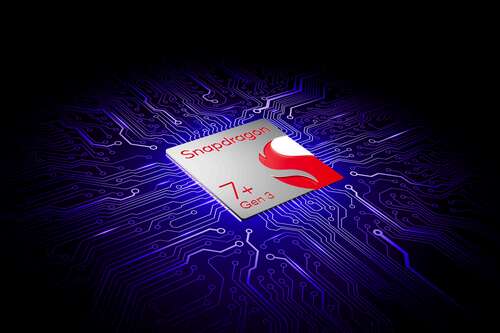
A lot of attention is given to Qualcomm’s elite range of chipsets, the Qualcomm Snapdragon 8 series. Those chips go into the best Android phones out there, and they’re both the most powerful and fully-featured chips on Qualcomm’s lineup. Now, Qualcomm has just launched the Snapdragon 7+ Gen 3, which will be used by some mid-range phones throughout 2024 and some of 2025.
Qualcomm has introduced the Snapdragon 7+ Gen 3 mobile platform, an improved version of the Snapdragon 7 Gen 3 that was announced in November 2023 (but took a while longer to actually show up in phones). As usual with the last few Qualcomm launches, generative AI is front and center here. The platform supports various AI models such as Baichuan-7B, Llama 2, Gemini Nano, and Zhipu ChatGLM. It has an AI Engine with a fused AI accelerator architecture, Hexagon scalar, vector, and tensor accelerators, and Hexagon Direct Link.
Even if you don’t care about that AI stuff, this is a pretty powerful chipset for typical tasks. The CPU features a 64-bit architecture with one Arm Cortex-X4 “Prime” core up to 2.8 GHz, four Performance cores up to 2.6 GHz, and three Efficiency cores up to 1.9 GHz. Aside from clock speeds, this is not too different from what we have in the Snapdragon 8 Gen 3. For photography enthusiasts, the chipset boasts Qualcomm’s Spectra ISP with real-time semantic segmentation photo and video processing, support for all types of HDR image sensors, and up to 108 MP single camera capture at 30 FPS with zero shutter lag.
Security features include Trust Management Engine, Qualcomm Trusted Execution Environment, and Qualcomm Type-1 Hypervisor for isolation from the high-level OS. In terms of connectivity, the chipset has the Snapdragon X63 5G modem with 5G mmWave and sub-6 GHz. It also supports Wi-Fi 7 with peak speeds up to 5.8 Gbps, and Bluetooth 5.4 with Snapdragon Sound Technology Suite.
This chipset will land on some Android mid-range smartphones from OnePlus, Realme, and other manufacterors. There probably won’t be many phones with this chipset in the US, if any, especially since it’s not too far off from the Snapdragon 8s Gen 3 chipset (which will be in at least one US phone).
Source: Qualcomm

